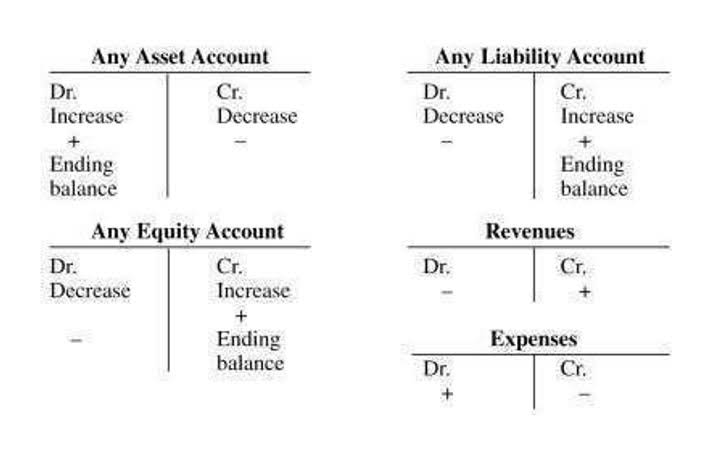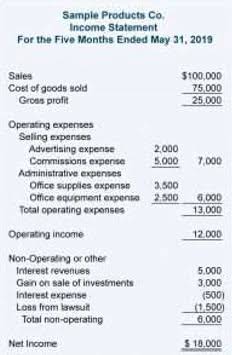
Examples of revenue include the sales of merchandise, service fee revenue, subscription revenue, advertising revenue, interest revenue, etc. The revenue accounts are temporary accounts that facilitate the preparation of the income statement. However, when a corporation earns revenue, it has the effect of increasing Retained Earnings. We can see this with the end-of-the-year closing entries which will move all the income statement account balances to Retained Earnings. Later, on the date when the previously declared dividend is actually distributed in cash to shareholders, the payables account would be debited whereas the cash account is credited.
- The process of calculating a company’s retained earnings in the current period initially starts with determining the prior period’s retained earnings balance (i.e., the beginning of the period).
- Current assets are items that are completely consumed, sold, or converted into cash in 12 months or less.
- However, it also deducts dividends from those amounts before reporting them on the balance sheet.
- Retained earnings on a balance sheet are essentially the profits that a company has made over time, but hasn’t distributed to its owners as dividends.
- This involves recording Dividends Payable as a liability on the balance sheet.
- The accounting equation is a fundamental concept in accounting that helps us understand the relationship between a company’s assets, liabilities, and capital.
- According to the article, retained earnings can be used to finance new investments or pay off debts.
What Is the Difference Between Retained Earnings and Dividends?
A liability, Dividends Payable, is recognized on the balance sheet. The board of is retained earnings a current liability directors approves the dividend, announcing the amount, record date, and payment date. The record date determines eligible shareholders, while the payment date is when the distribution occurs. Financial statements are adjusted by debiting Retained Earnings and crediting Dividends Payable, reducing equity available for reinvestment. The only definition that retained earnings meet is that of equity.

InvestingPro: Access Total Liabilities and Equity Data Instantly
- Now let’s draw our attention to the three types of Equity accounts, discussed below, that will meet the needs of many small businesses.
- Such items include sales revenue, cost of goods sold (COGS), depreciation, and necessary operating expenses.
- These three components are interconnected and play a crucial role in a company’s financial health.
- Cash dividends lead to cash outflow and are recorded as net reductions.
- Dividends paid to shareholders will reduce the amount shown in the statement of retained earnings.
- The relationship between dividends and retained earnings highlights a company’s operational priorities.
The dotted red box in the shareholders’ equity section on the balance sheet is where the retained earnings line item is recorded. On one hand, high retained earnings could indicate financial strength since it demonstrates a track record of profitability in previous years. On the other hand, it could be indicative of a company that should consider paying more dividends to its shareholders. This, of course, depends on whether the company has been pursuing profitable growth opportunities. Profits give a lot of room to the business owner(s) or the company management to use the surplus money earned.

Account
- The formula for retained earnings is straightforward, as stated below.
- After that, we will not be able to record the prior year’s income statement.
- Alternatively, the company paying large dividends that exceed the other figures can also lead to the retained earnings going negative.
- For an analyst, the absolute figure of retained earnings during a particular quarter or year may not provide any meaningful insight.
- Let’s assume that on December 31 a corporation received $10,000 for services to be done in January.
I define each account type, discuss its unique characteristics, and provide examples. Upon combining the three line balance sheet items, we arrive at the end-of-period balance – for instance, Year 0’s ending balance is $240m. Profit is the company’s bottom line – its total income earned from the sale of goods and services. It usually refers to net income, or the total income minus the cost of doing business.

Accounting Basics

It involves paying out a nominal amount of dividends and retaining a good portion of the earnings, which offers a win-win. All of the other options retain the Record Keeping for Small Business earnings for use within the business, and such investments and funding activities constitute retained earnings. Similarly, assets in accounting are resources owned or controlled by a company. These resources result in an inflow of economic benefits in the future. Before discussing where retained earnings fall on the balance sheet, it is crucial to understand what they are. It is easier to understand what retained earnings are after defining them.

